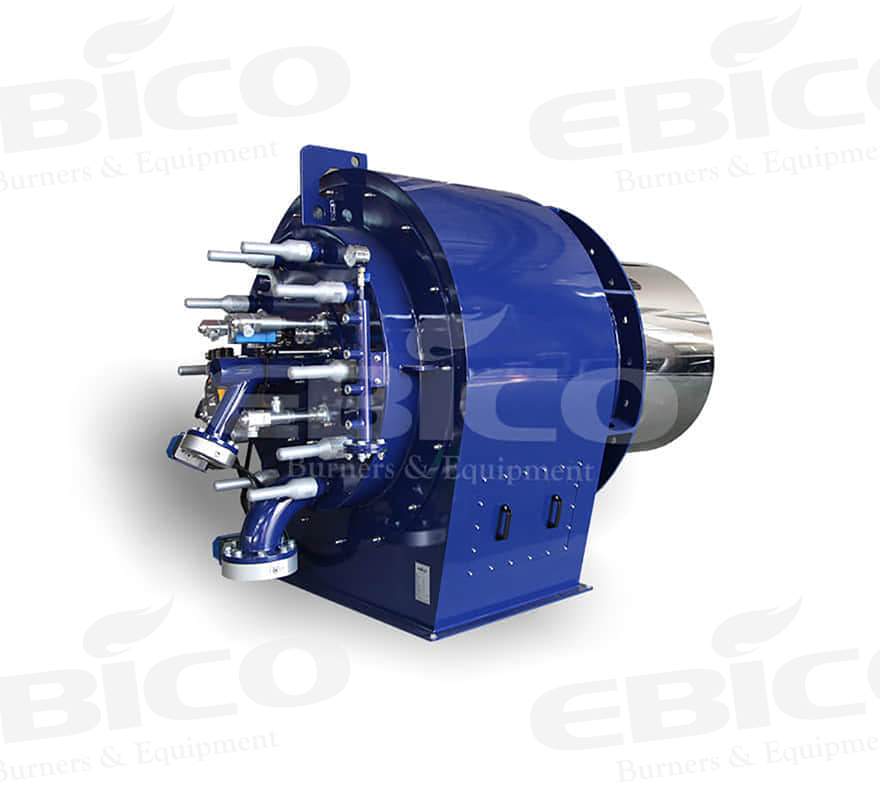Precautions For Installation And Transformation Of Fuel Gas Burner
Precautions For Installation And Transformation Of Fuel Gas Burner
This paper analyzes the problems existing in the installation and transformation of fuel gas burners of industrial boilers and puts forward corresponding solutions to ensure safety to the maximum extent.
1. Installation and transformation of the fuel gas burner of the industrial boiler
An industrial boiler burner is an extension product of boiler and a part of special equipment. According to the regulations on the safety supervision of special equipment, it must be approved by the special equipment safety supervision and Administration Department of the State Council. This is a national regulation. Anyone and any unit should abide by it. Users are not allowed to install or modify it without authorization.

2. Burner selection
(1) The heat load of the burner depends on the gas output and low calorific value of the nozzle under certain supply pressure. There are two types of gas calorific value: high calorific value and low calorific value. High calorific value refers to the calorific value of fuel when water vapor in flue gas condenses after fuel combustion. Low calorific value refers to the calorific value of water vapor in flue gas when it is not condensed after fuel combustion. The flue gas temperature of the boiler exceeds 100 ℃, and the water vapor in the flue gas will not condense under atmospheric pressure. Therefore, the calorific value of the fuel used in the boiler is low calorific value. The burner used in the boiler needs to be calculated in detail according to the boiler power, boiler efficiency, fuel heating value, air pressure, and temperature.
(2) The flame shape of the burner must conform to the shape of the furnace and shall be carried out without hindering the flame propagation, that is, the combustion length shall not exceed the length determined by the furnace structure; The diffusion (diameter) shall not impact the heating surface. Because the calorific value of gas fuel varies greatly, from 3265kj / m3 to 114875kj / m3, the flame shape of different gas fuels also varies. When selecting a combustion furnace, it is necessary to understand the geometric dimension of its flame shape.
(3) The maximum allowable air pressure and the minimum allowable air pressure in front of the burner. For a burner with a fixed structure, its nozzle structure has been fixed. When the gas type is consistent with the burner design, the power of the burner during operation is only related to the inlet pressure. The gas source pressure is not completely stable. When the gas pressure increases, the gas flow increases, and vice versa, which is easy to cause combustion failure. In order to avoid this situation, the pressure stabilizing valve shall be installed in the air supply pipeline, and the air pressure regulating range shall be selected according to the air source and the air source.
(4) The arrangement of burners shall be consistent with the shape of the furnace body so that the flame is well filled. The nozzle shall be kept at a proper distance from the furnace mouth, furnace bottom, and furnace wall. The flame shall have a sufficient length not to be interfered with by the four walls. When multiple burners are used in the pipeline where the flame cannot contact the heating surface, the distance between the burners shall ensure that the flame will not interfere with each other.
(5) The structure of the burner shall be able to ensure the uniform mixing of gas and air, and the ratio of air and gas can be adjusted, so as not to lose fire under high load and not to backfire under low load.
(6) In principle, the same gas as that indicated on the nameplate of the burner shall be used. When using different gas, the burner supplier shall be consulted in advance and written approval shall be obtained. Usually, the burner shall be re-commissioned, and individual parts shall be replaced.
(7) The installation position of the burner shall be convenient for operation, that is, the distance between the center line of the burner and each wall surface of the furnace wall shall be ensured. As the burner is the main operating object of the boiler, its position shall be convenient for the driver to operate and observe.
3. Technical data preparation
The drawings, operating instructions, setting instructions, and other technical data provided by the burner manufacturer are the most important technical data during the setting and transformation. The setting and transformation departments must be fully familiar with the operating instructions. At present, the setting and transformation departments do not pay much attention to the data collection in this respect. It is not enough to simply mechanically connect all parts of the burner and hand them over to the equipment supplier for adjustment.
The installation and transformation of fuel gas burners of industrial boilers is very professional work, which should be installed and transformed by professional units and personnel, and strict working procedures should be implemented to reduce accidents.
